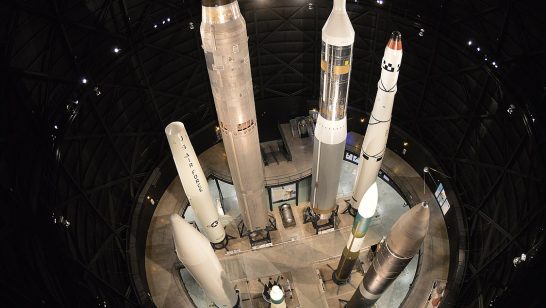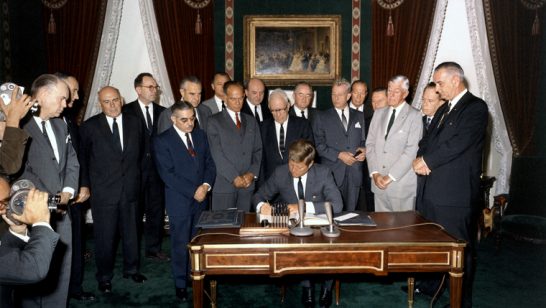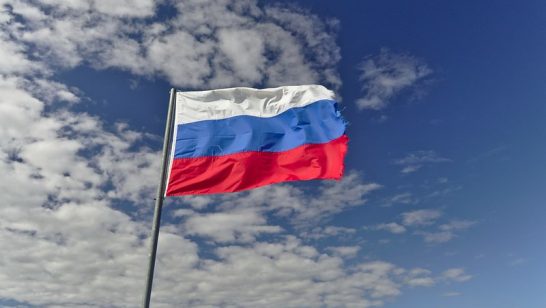
The main reason for the failure of five out of the nine NPT Review Conferences held since 1975 can be found in the early history of the Treaty. The question of the non-proliferation of nuclear weapons had been under debate in the United Nations for several years. A draft treaty on this matter, proposed by the United States and the USSR, was discussed at the Eighteen-State Disarmament Committee in 1966 and 1967. As no consensus was reached, a revised text was presented to the United Nations General Assembly in 1968. Many non-nuclear weapon States disagreed, calling for stronger commitments to nuclear disarmament. They also believed that their right to develop, research and use nuclear energy for peaceful purposes could be unduly curtailed. Despite such concerns, the majority of the Assembly commended the draft Treaty to the signature of States. There were four votes against and 21 abstentions. Nevertheless, over the next few decades the NPT came to be accepted by all non-nuclear weapon States and today is considered the cornerstone of the non-proliferation regime. At each Review Conference, however, the original differences stubbornly come back to the fore to prevent progress.
The NPT has been undoubtedly quite successful in containing the proliferation of nuclear weapons. Non-proliferation commitments have been faithfully observed: since its inception none of the non-nuclear weapon Parties have acquired atomic armament (North Korea being a separate case). At the same time, several among them succeeded in asserting full national control over all phases of the nuclear fuel cycle, under the agreed safeguards provided for in Article IV of the Treaty. Some have accepted voluntary additional verification procedures. Compliance with nuclear disarmament, however, still lags sorely behind.
Despite the positive record of the NPT regarding non-proliferation, some of its Parties continue to insist on the adoption of increased restrictions on the peaceful activities of non-nuclear weapon Parties. Over the years, a number of proposals have been put forth, ranging from interpretations of Article X regarding the right of withdrawal from the Treaty to the transformation of existing voluntary arrangements into compulsory standards for the transfer of technology or of nuclear assistance for civil purposes. Latest among these back-door attempts to create increased obstacles to the exercise of the inalienable right to peaceful uses of atomic energy, enshrined in Article IV, are recent suggestions that any limitations that may be agreed by Iran on its nuclear program in the ongoing negotiations with the P5+1 could become “a useful basis” for further restrictions to be applied on the peaceful activities of other non-nuclear weapon Parties to the NPT. According to these suggestions, strict limits would be imposed on the number and quality of centrifuges operated by non-nuclear-weapon States and a link would be established between their activities and their “effective needs” in terms of fuel for power plants and research. It is unclear by what criteria or under whose authority such “effective needs” would be determined. Proponents of the ideas argue that if agreed by Iran, such restrictions should in fact become a “model” to be adopted by third non-nuclear States and even by the international community as a whole. Nothing has been said, however, on whether there is an “effective need” of the nuclear weapon States to retain their arsenals and to develop their own technology as they see fit.
It is hard to understand how arrangements designed for a specific situation and that may be agreed between two negotiating parties – Iran on one side and the P5+1 on the other – can be applied by a sleight of hand to States that did not participate in putting together such arrangements.
It might be useful to reflect on the link between the imbalance between non-proliferation and disarmament commitments and the recurrent failures that have haunted NPT Review Conferences over the course of the Treaty’s history.
*This text was written in the last week of June, before the deadline for the negotiations between the P3+3 and Iran.
The opinions articulated above represent the views of the author(s), and do not necessarily reflect the position of the European Leadership Network or any of its members. The ELN’s aim is to encourage debates that will help develop Europe’s capacity to address the pressing foreign, defence, and security challenges of our time.



